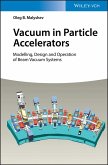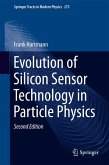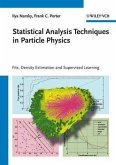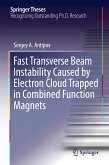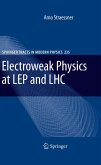Offers a clear and practical introduction to the essentials of charged particle beam physics, covers the design of accelerator machines and their basic components
A cornerstone of modern accelerator technology, charged particle beam physics encompasses theoretical principles, advanced simulations, and real-world applications. Charged Particle Beam Physics: An Introduction for Physicists and Engineers provides a comprehensive foundation for understanding, modeling, and implementing beam optics components in accelerator systems.
Combining essential concepts with cutting-edge techniques, such as the transfer-matrix method and numerical simulation tools, this detailed yet accessible textbook simplifies the core concepts and principles of the complex field. Reader-friendly chapters systematically address ion sources, beam optics design, advanced diagnostic and vacuum systems, and more. Authors Sarvesh Kumar and Manish K. Kashyap discuss key topics such as electrostatic, magnetostatic, and radiofrequency fields, as well as practical applications in materials science, plasma physics, and radiation biology.
Bridging theoretical knowledge with practical implementation, Charged Particle Beam Physics:
Charged Particle Beam Physics: An Introduction for Physicists and Engineers is ideal for graduate-level students in physics and engineering courses focused on accelerator physics and beam optics, as well as researchers and professionals working in accelerator design and operation. It serves as both a teaching resource and a reference for practitioners tackling fundamental calculations and developing accelerator components across various disciplines.
A cornerstone of modern accelerator technology, charged particle beam physics encompasses theoretical principles, advanced simulations, and real-world applications. Charged Particle Beam Physics: An Introduction for Physicists and Engineers provides a comprehensive foundation for understanding, modeling, and implementing beam optics components in accelerator systems.
Combining essential concepts with cutting-edge techniques, such as the transfer-matrix method and numerical simulation tools, this detailed yet accessible textbook simplifies the core concepts and principles of the complex field. Reader-friendly chapters systematically address ion sources, beam optics design, advanced diagnostic and vacuum systems, and more. Authors Sarvesh Kumar and Manish K. Kashyap discuss key topics such as electrostatic, magnetostatic, and radiofrequency fields, as well as practical applications in materials science, plasma physics, and radiation biology.
Bridging theoretical knowledge with practical implementation, Charged Particle Beam Physics:
- Provides in-depth coverage of charged particle beam physics, relevant to both single-pass configurations and standard beam transport lines across accelerator systems
- Combines elements of electrodynamics, particle physics, optics, and engineering for a holistic understanding
- Explores state-of-the-art methods such as open-source beam optics codes
- Includes end-of-chapter problems and worked solutions, along with numerical examples using open-source tools such as TRANSPORT and TRACE3d
Charged Particle Beam Physics: An Introduction for Physicists and Engineers is ideal for graduate-level students in physics and engineering courses focused on accelerator physics and beam optics, as well as researchers and professionals working in accelerator design and operation. It serves as both a teaching resource and a reference for practitioners tackling fundamental calculations and developing accelerator components across various disciplines.
Dieser Download kann aus rechtlichen Gründen nur mit Rechnungsadresse in D ausgeliefert werden.




